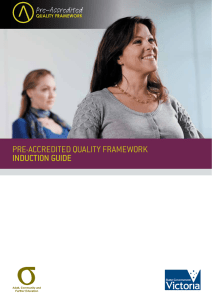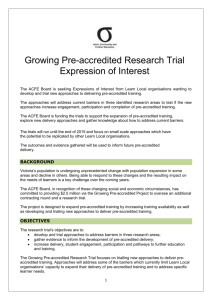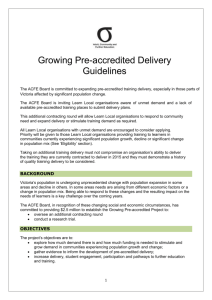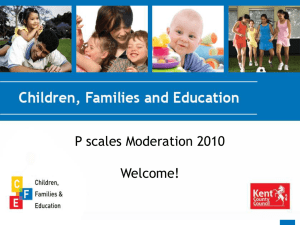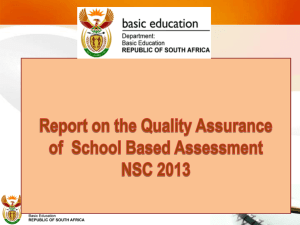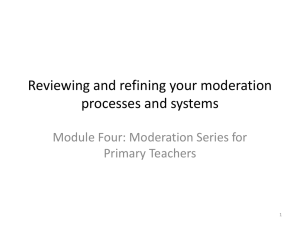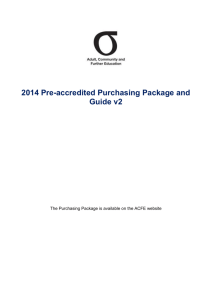Induction training session presentation (pptx
advertisement
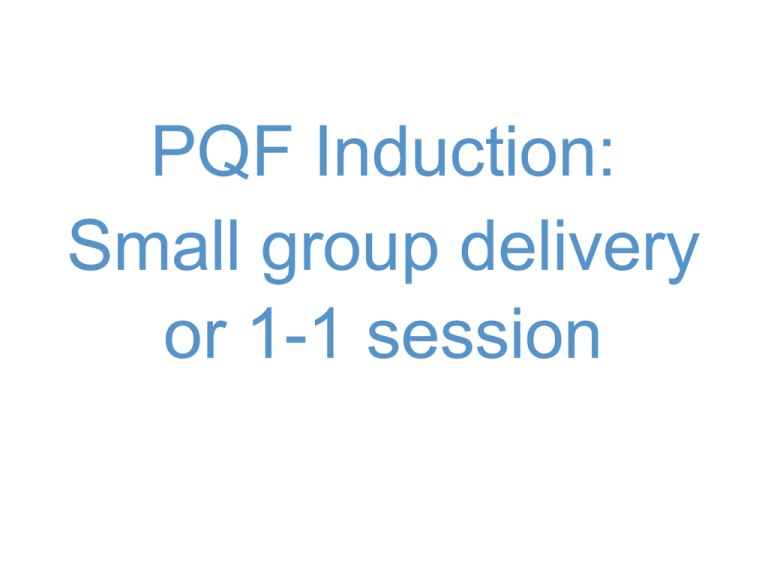
PQF Induction: Small group delivery or 1-1 session Topics • The purpose of the Quality Preaccredited Framework • Planning guide - focusing on course plan • Teaching guide- focusing on learner plan • Moderation • Implementation What is the purpose of preaccredited education ? • To provide opportunities that engage and initiate vocational pathways for the most educationally disadvantaged learners. • To address the particular needs of adults who have experienced barriers to education and find it difficult to undertake accredited courses as their first step into vocational training. What is the purpose of pre-accredited education ? The ACFE Board purchases pre-accredited courses whose content can be classified as follows: Adult Literacy and Numeracy - including ESL Employment Skills - basic skills to support work or further learning Vocational Programs - assists people with skills acquisition, return to work or to change jobs. Digital Literacy - understand and utilise a range of digital technologies. What is the purpose of the Preaccredited Quality Framework? The purpose of the Pre-accredited Quality Framework is to ensure: • Pre-accredited courses are of a high and comparable quality regardless of where they are delivered. • Learn Local organisations and teachers implement quality continuous improvement processes. • The A-frame is implemented consistently. • The ACFE Board purchases quality pre-accredited courses that have been developed in response to the needs of learners, employers and the community. What does this kit contain? Section 1 Overview Background to the Pre-accredited Quality Framework Section 5 Moderation Guide A guide to the processes and documentation for moderation and verification Section 6 Stakeholder Guide Section 2 A-frame Background and documentation for the use of the Information for Learn Local stakeholders key pre-accredited course planning tool: the ASection 7 Induction Guide frame A model for introducing the Pre-accredited Quality Framework Section 3 Planning Guide Overview of planning and delivery processes for Section 8 Case Studies managers and coordinators Examples of pre-accredited courses Section 4 Teaching Guide Section 9 Glossary Ideas and strategies for teachers delivering AKey terms defined frame courses Planning guide Planning guide Moderation 1.1 The program design is based on input/feedback from learners; Learn Local adult education organisation staff; and/or industry and community groups 1.Program design 1.2 The program offers recognition and pathways on completion and facilitates the investigation of future directions to employment and/or further studies 1.3 Reflective teaching and learning practices are in place to inform continuous improvement models. 2.1 The learning design addresses personal, community and employment needs 2.Learner-centred approaches 2.2The program builds on skills, behaviours and confidence to be used beyond the learning setting 2.3The teaching and learning activities focus on the development of employability skills 3.1The teacher has the knowledge and skills to engage learners 3.2The teacher has the relevant content expertise 3.Quality teaching 3.3 The teacher is engaged in on-going professional development to support quality pre-accredited delivery. Planning guide Let’s review the planning guide together Complete your action plan Teaching guide Teaching Guide 3.1 The teacher has the knowledge and skills to engage learners 3. Quality teaching indicators 3.2 The teacher has the relevant content expertise 3.3 The teacher is engaged in on-going professional development to support quality pre-accredited delivery. Teaching guide Let’s review the teaching guide Opening Learning plan Adult learning principles Employability skills . Complete your action plan Moderation of pre-accredited delivery What is moderation? Why undertake moderation? Moderation of Pre-accredited delivery 1. Teachers and/or program planners, presenting, analysing, discussing and documenting adjustments to the content and delivery of their pre accredited programs. 2. Unlike moderation of accredited courses, pre accredited moderation evaluates the program content and delivery not the design and use of assessment tools. 3. Moderation is a collaborative, peer appraisal process that promotes a shared understanding of what constitutes quality program design, delivery and outcomes for learners. Benefits of moderation Simple Complements existing practice and resources (A-frame) Professional development for practitioners Links to validation process Continuous improvement tool Caters for different programs and learner groups Face to face or online application Can be incorporated into induction and other planning activities Embeds peer support Let’s revisit employability skills Communication Teamwork Problem solving Initiative and enterprise Planning and organising Self management Learning Technology Review When can moderation take place? Internal When planning a new course External Mapping the WHAT to teach and HOW to deliver to employability skills based on the learner cohort Peer input Implementing new learner pathways Feedback from learners During mid course review Feedback from teachers and other key staff Feedback from learners Post course evaluation Feedback from teachers and other key staff Feedback from other stakeholders Let’s review the 4 Moderation tools – A,B,C,D A: Moderation Checklist B: The Moderation Tool C: Moderation Summary D: Verification Self Assessment & Declaration Complete your action plan

